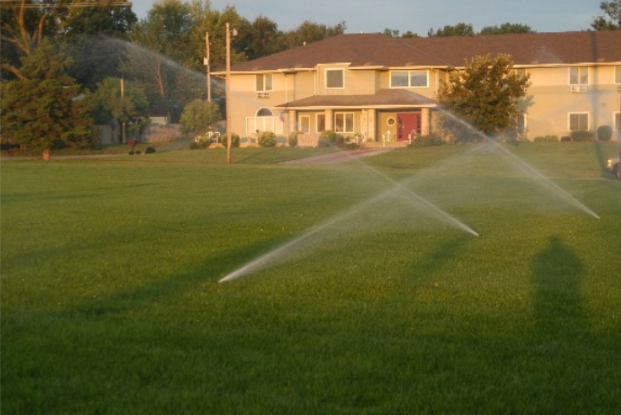Nearly every homeowner has a lawn in this area. Not all lawns are created the same. There are cool-season lawns like tall fescue and there are warm-season lawns like bermudagrass and zoysia grass These lawns have difference cultural requirements, they are as different as apples are to oranges. Do not treat a warm-season grass like a cool-season grass! The following is a lawn calendar for zoysia grass and bermudagrass.
March
Spot treat broadleaf weeds if necessary. Treat on a day that is 50 degrees F or warmer if possible. Rain or irrigation within 24 hours of application will reduce effectiveness.
April
Apply crabgrass preventer between April 1 and April 15, or apply preventer when the eastern redbud is approaching full bloom. If using a product with prodiamine (Barricade), apply two weeks earlier. Crabgrass preventers must be watered in before they will start to work.
May – August 15
Fertilize with 1 lb. of nitrogen per 1,000 square feet per application. Follow the recommendations on the bag. More applications will give a deeper green color, but will increase mowing and lead to thatch buildup with zoysia grass. Bermudagrass can also have problems with thatch buildup but thatch is less likely with Bermuda than zoysia.
Bermuda grass – Use two to four applications.
Zoysia grass – Use one to two applications. Too much nitrogen leads to thatch buildup.
One Application: Apply in June.
Two Applications: Apply May and July.
Three Applications: Apply May, June, and early August.
Four Applications: Apply May, June, July, and early August.
June
If grubs have been a problem in the past, apply a product containing imidacloprid by mid July. Imidacloprid can be applied as early as mid May if there are problems with billbugs or May beetle grubs. These products kill the grubs before they cause damage. They are effective and safe but must be watered in before they become active.
June is a good time to core aerate a warm-season lawn. Core aeration will help alleviate compaction, increase the rate of water infiltration, improve soil air exchange and help control thatch.
Late-July through August
If you see grub damage, apply a grub killer. If Imidacloprid has been applied, this should not be necessary. Grub killers must be watered in immediately.
Late October
Spray for broadleaf weeds if they are a problem. Treat on a day that is at least 50 degrees F. Rain or irrigation within 24 hours reduces effectiveness. Use the rates listed on the label for all products mentioned.





